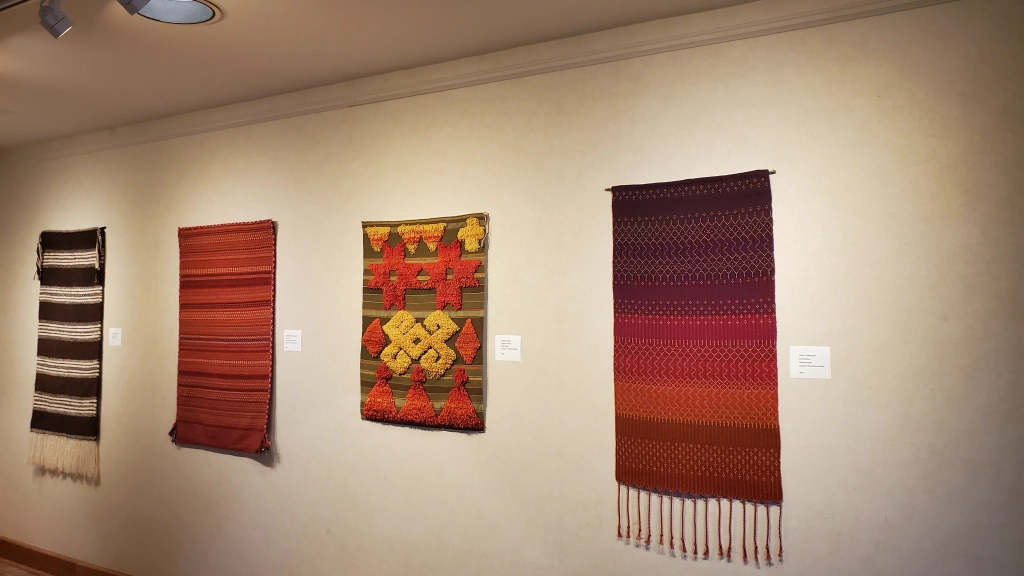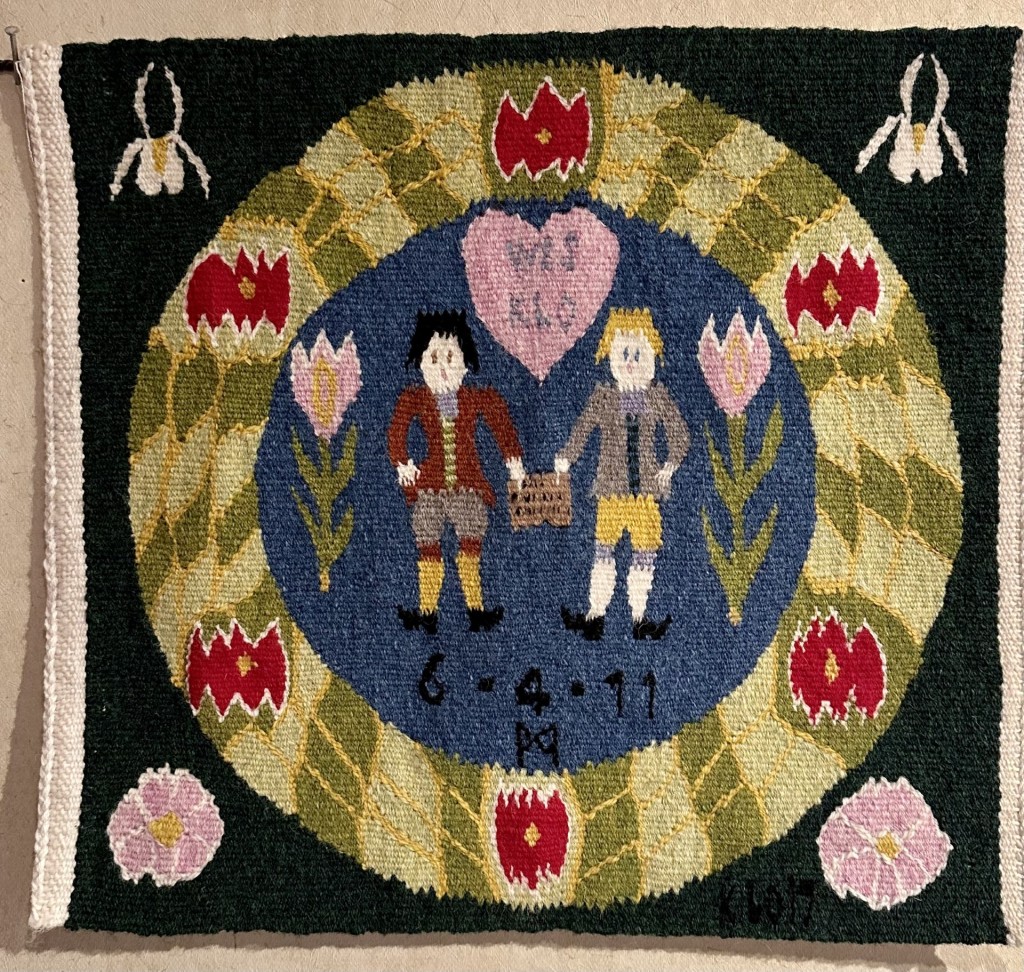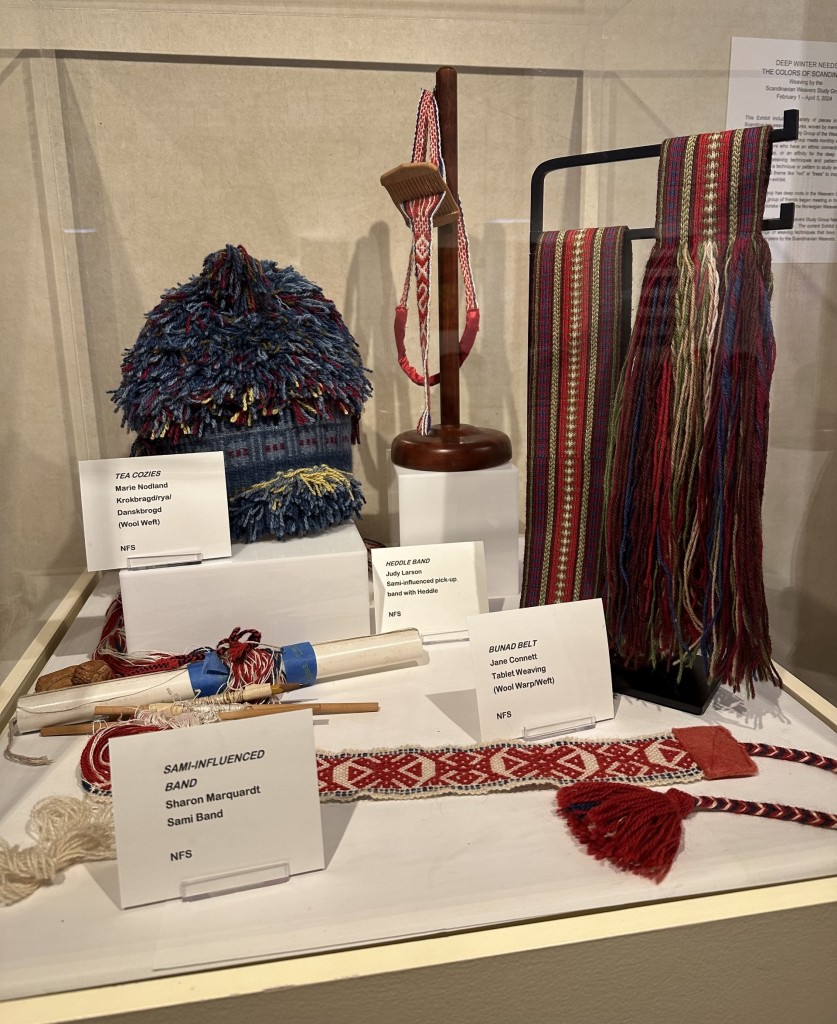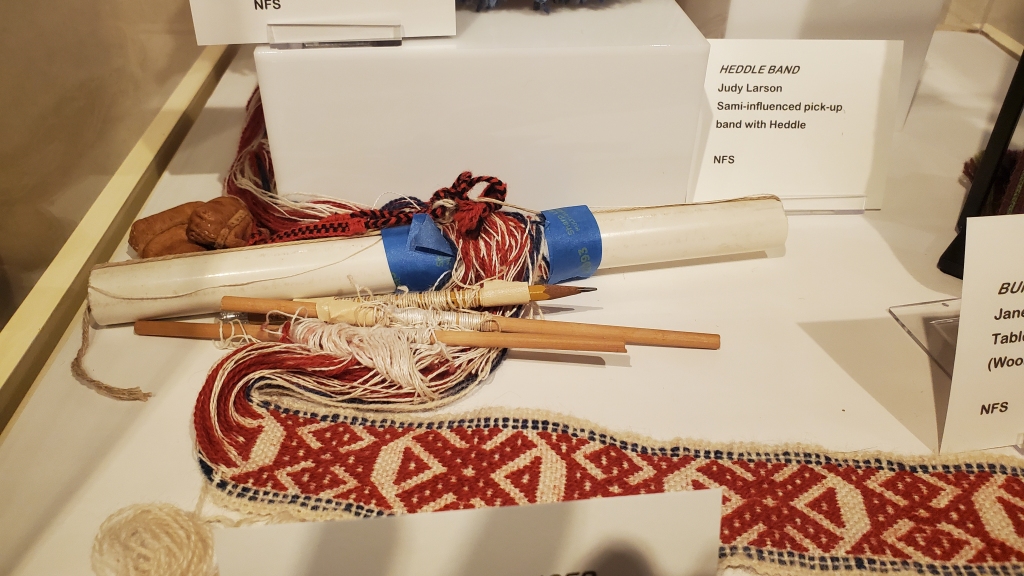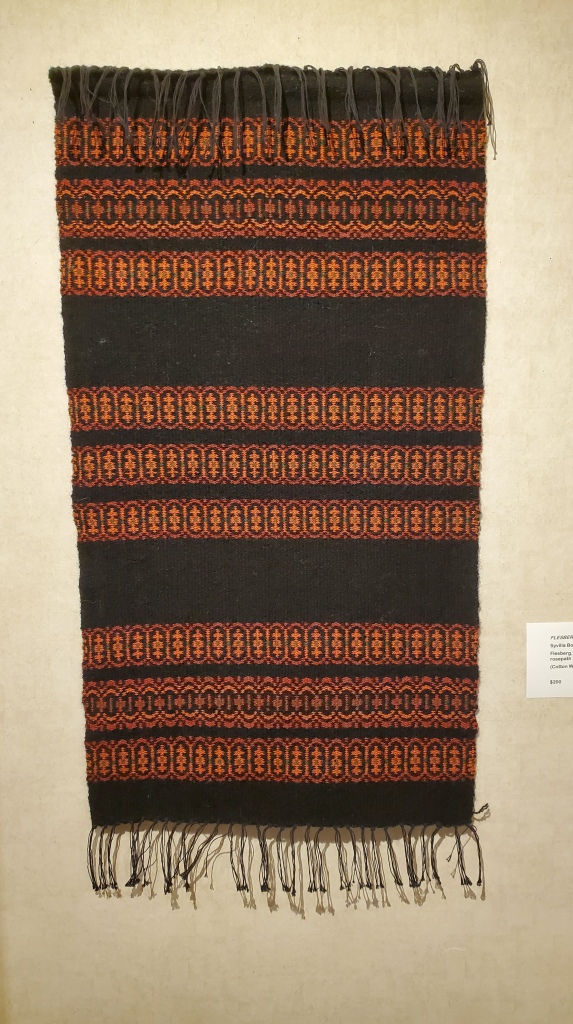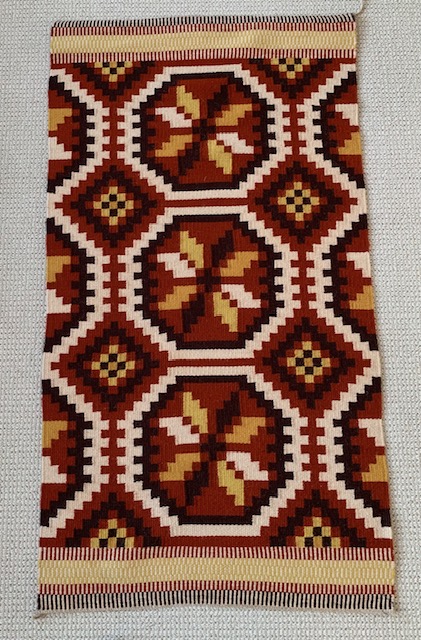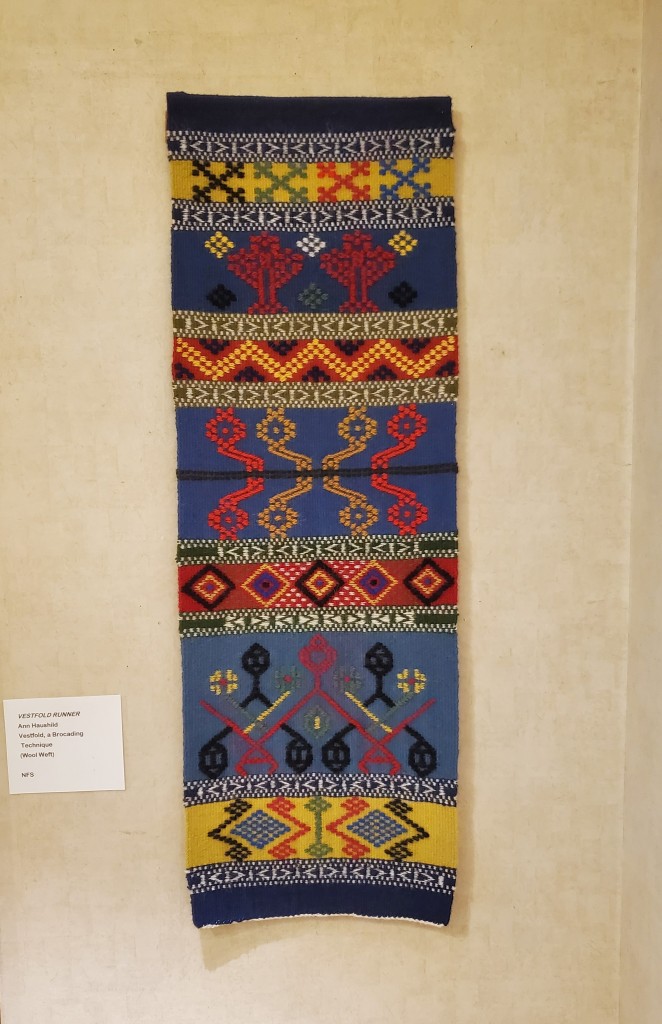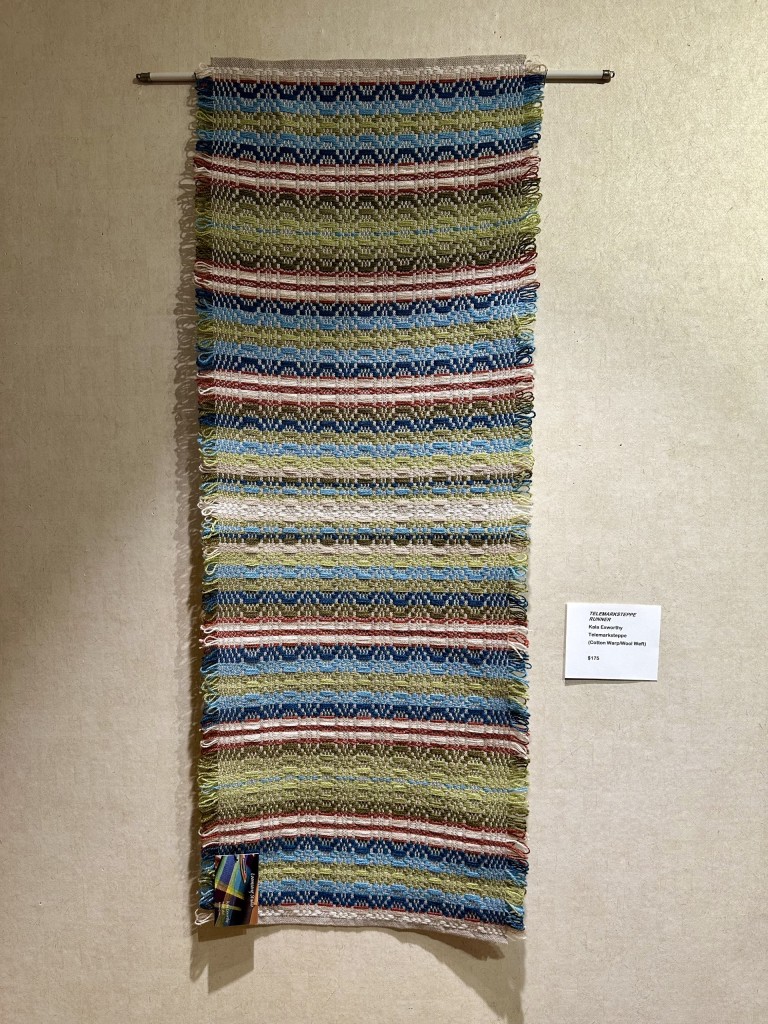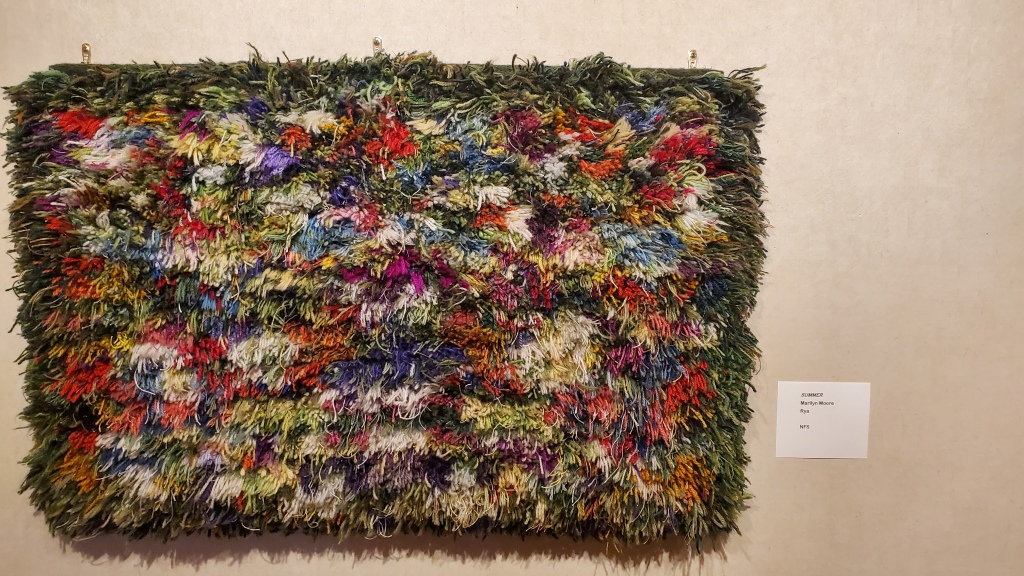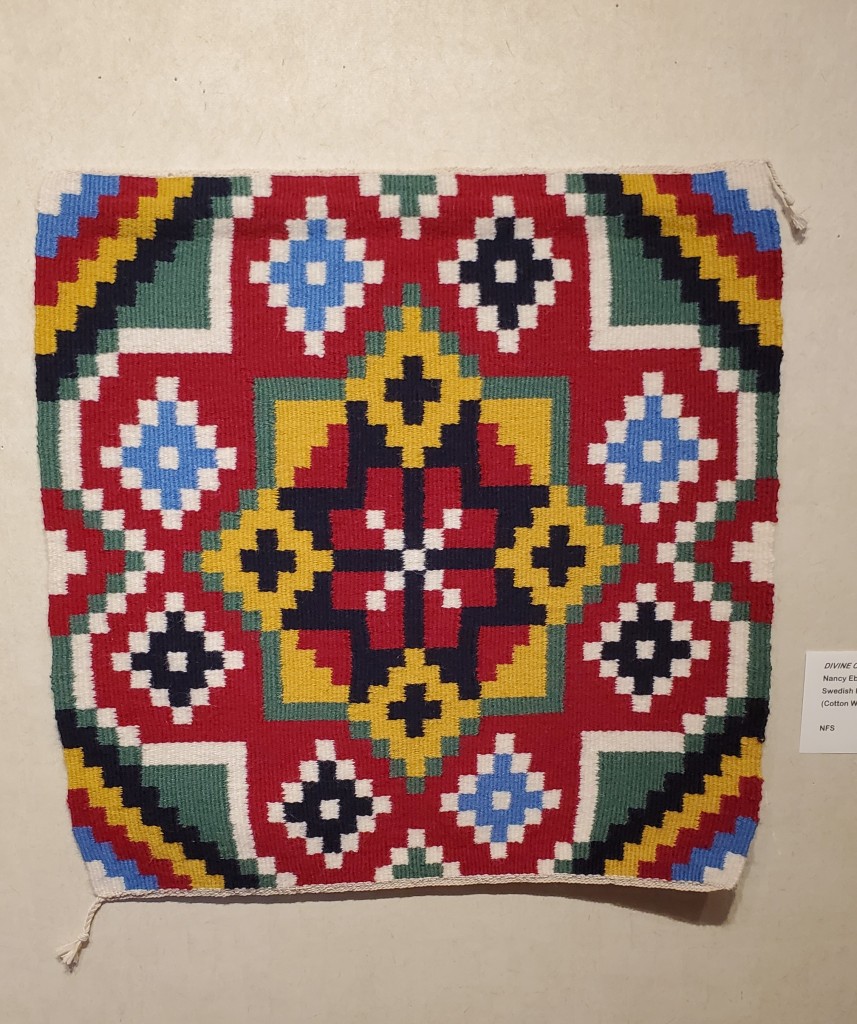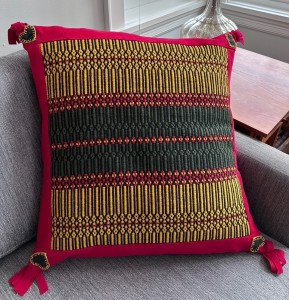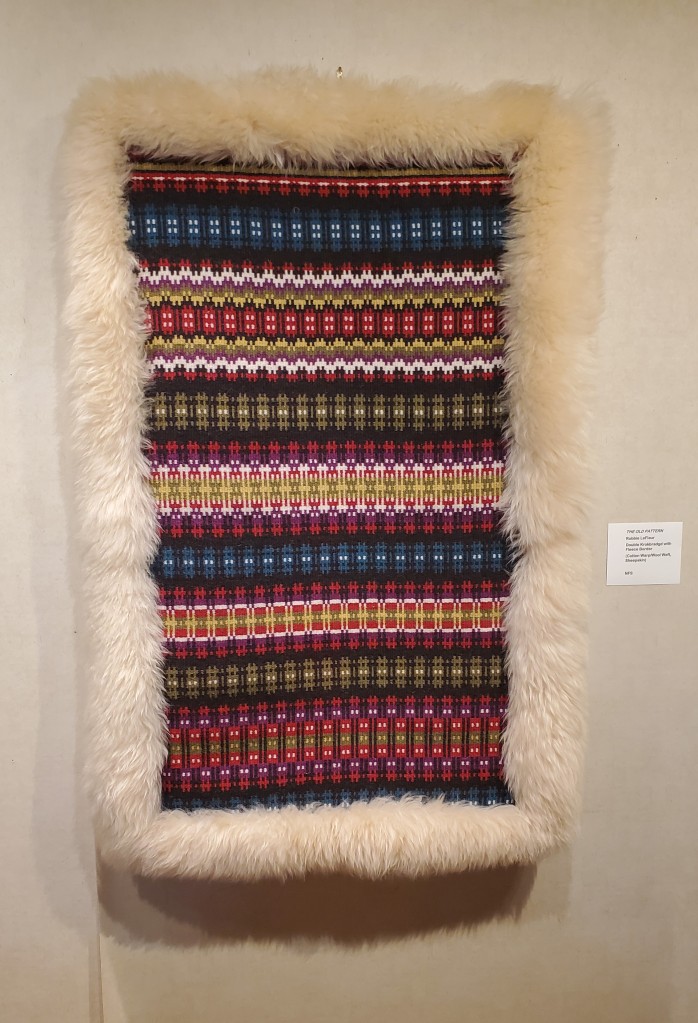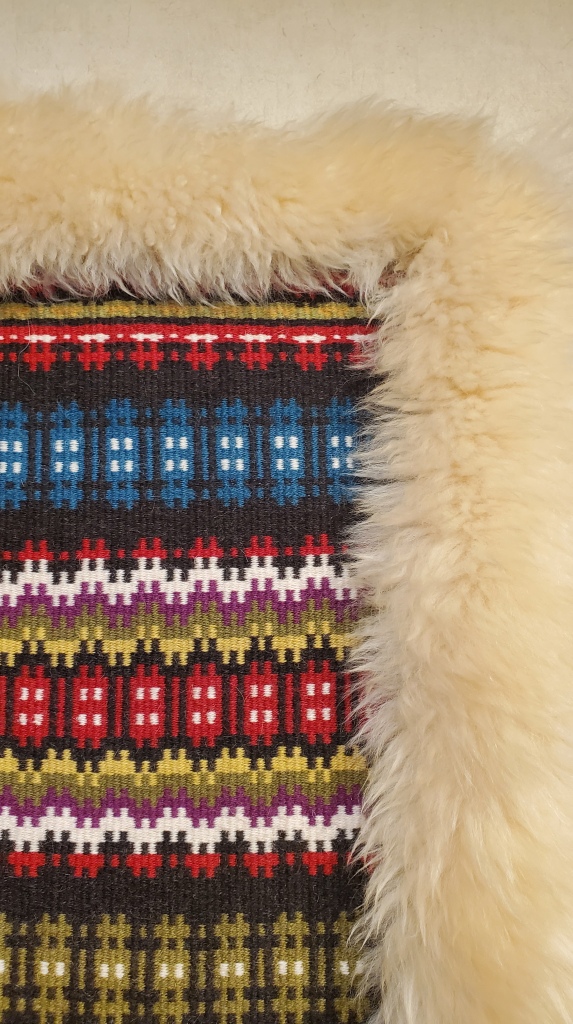“Deep Winter Needs the Colors of Scandinavia” (Part Two)
March 20, 2024 Leave a comment

The Scandinavian Weavers exhibit “Deep Winter Needs the Colors of Scandinavia” is currently on view (through April 2, 2024) at Becketwood Senior Cooperative in Minneapolis. While Becketwood is a private residence, you can arrange to see the exhibit by calling the front desk at (612) 722- 4077 prior to your visit to make sure the galleries are open for viewing. We recently enjoyed a gallery talk with residents, who asked great questions about the traditional weaving techniques on display.
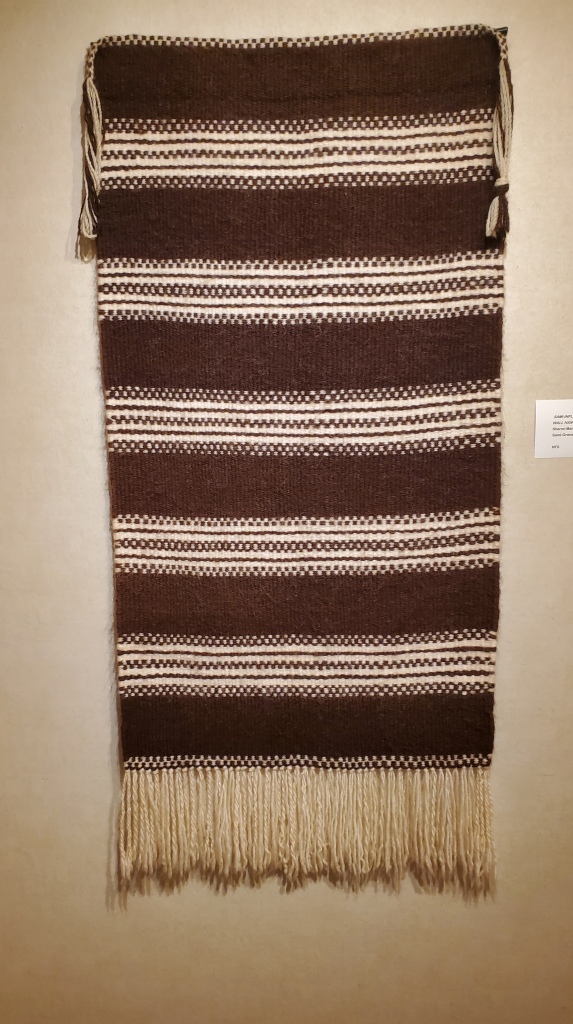
Sharon Moe Marquardt wove this Sami-style grene on a warp-weighted loom while on a study trip in Norway. She learned this traditional technique from Sonja Vangen and Olaug Isaksen at Lofoten Folkehøgskole in Kabelvåg, near Lofoten.
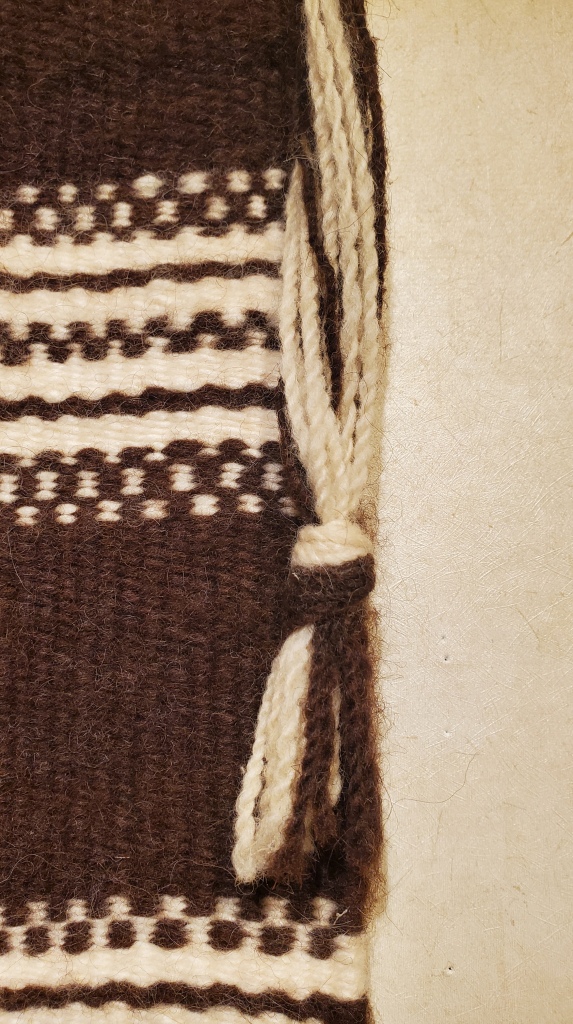
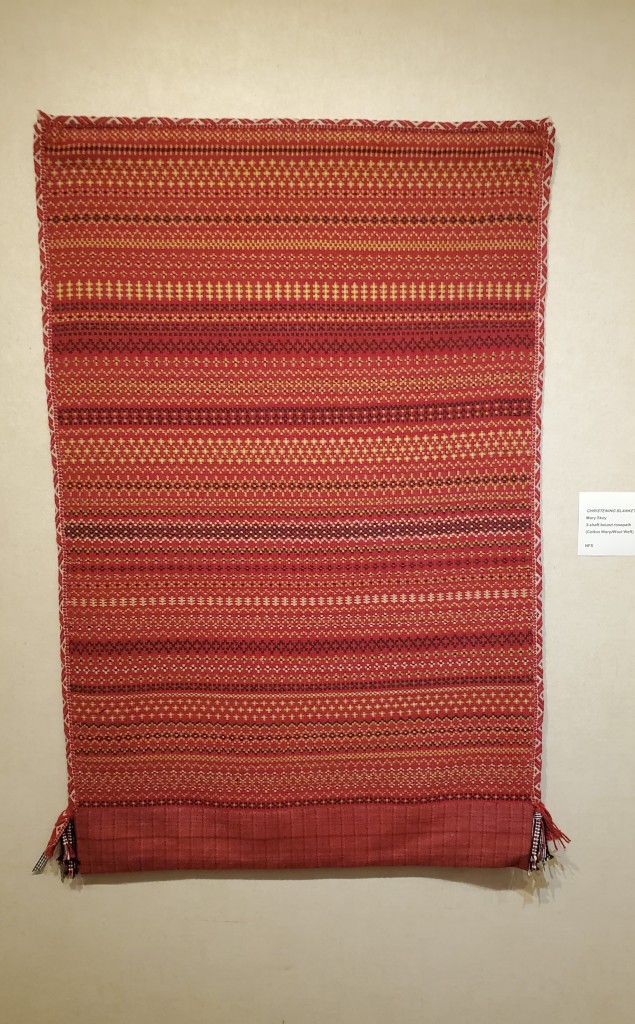
Mary Skoy was also inspired by her travels in Scandinavia. She wove this traditional-style christening blanket based on one she saw in a museum in Sweden. “Red being my favorite color,” she explains, “I knew I needed to reproduce it!” Christening coverlets were traditionally woven with protective symbols to shield the infant from evil influences while being carried to church for baptism. The coverlet is woven in three-shaft bound rosepath with cotton seine warp and wool weft. The selvedges are covered with a band, woven on an inkle loom with pick-up patterns, which also includes protective symbols. (Read more: https://norwegiantextileletter.com/article/baby-basket/)
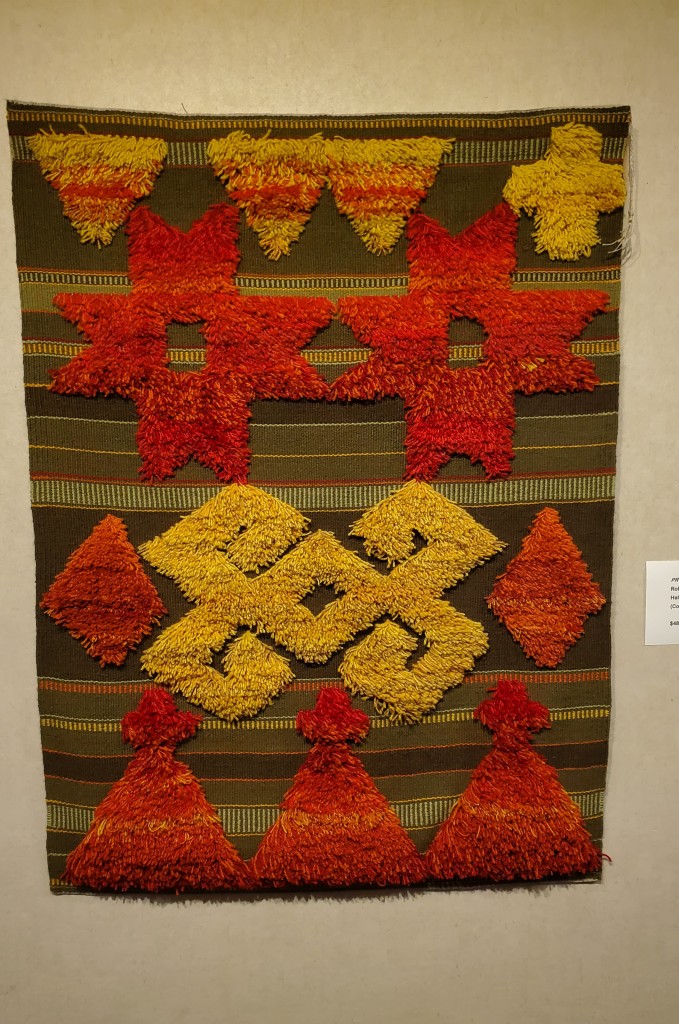
Robbie LaFleur wove this colorful half-flossa wall hanging, called “Protection,” for the Scandinavian Weavers previous exhibit “Myths, Symbols, and Fairy Tales.” Half-flossa technique includes alternating sections of plain weave and short pile.
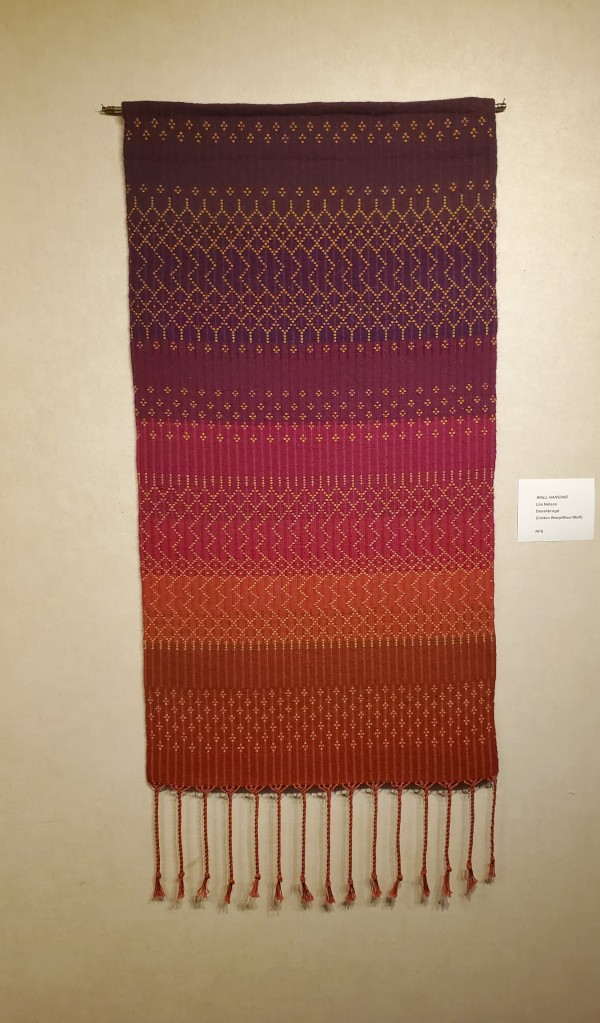
Lila Nelson, one of the original founders of the Scandinavian Weavers group, wove this elegant danskbrogd wall hanging, which is in the permanent collection of the Weavers Guild of Minnesota. Lila did extensive research on danskbrogd and is largely responsible for bringing the technique to the United States.

Judy Larson wove this stunning rag rug called “Rippling Water.” The rug is a double binding rug in which smaller strips of multiple blue fabrics were sewn together to contrast with the navy solids. “Rippling Water” was a labor of love. “Even with all the fabric prepped and already on the shuttles,” Judy explains, “this rug took 8 hours to weave at the loom!”
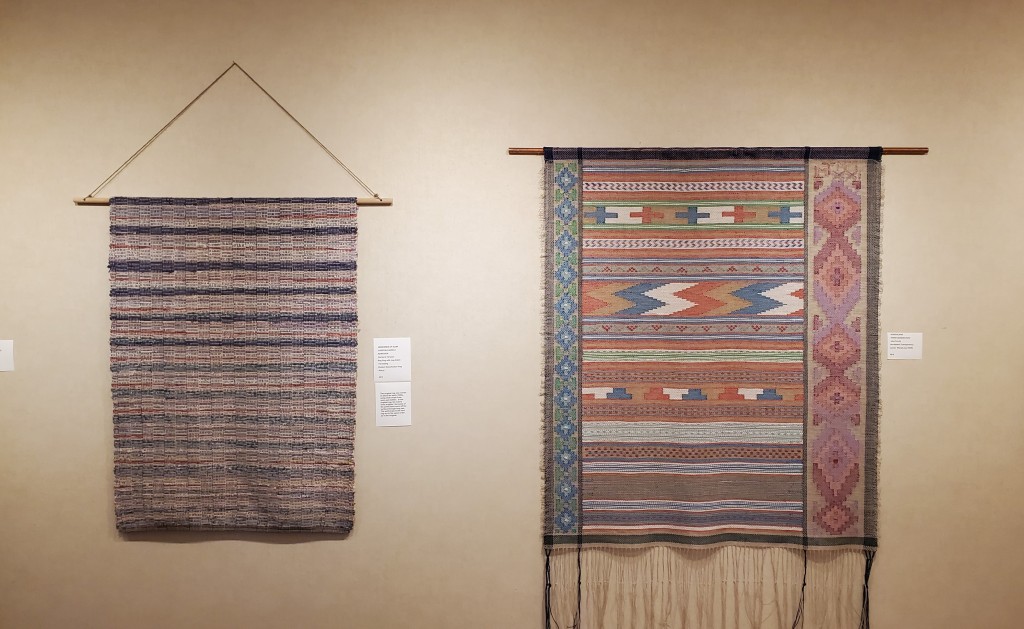
On the left is another rag rug, this one woven by Barb Yarusso. The weft comes from a rug woven by her grandmother Alma Norhala, an immigrant from Finland. The original rug was woven in the 1950s, in plain weave with log cabin threading. Barb carefully salvaged and cleaned the cotton weft material and re-wove it into a new rug as her way of honoring Alma’s work and carrying on the immigrant tradition of not letting anything go to waste. Barb’s rug exactly re-creates the original log cabin threading as well as the stripe sequence. (Read more: “In Honor of Alma: A Reconstructed Rag Rug.)
On the right is “Horda 3rd Gen,” a transparency by Lisa Torvik. Lisa studied weaving in Norway and focuses her work on traditional Norwegian techniques and geometric designs. In this case, the center panel is based on a coverlet from the Hordaland region of Norway, while the motifs along both sides are abstract improvisations on traditional motifs. In 2023, “Horda 3rd Gen” won first place in the “Weaving the North” exhibit at North Suburban Arts Center as well as a blue ribbon at Vesterheim’s National Norwegian-American Folk Art Exhibition. (Read more: “Three “Generations” of an Old Hordaland Weaving Design.”)

Raanu is a traditional Finnish weave that takes many different forms. Lisa-Anne Bauch learned to weave raanu rugs from Wynne Mattila at the Weavers Guild of Minnesota. Most raanus take their color inspiration from the natural world. “Polar Vortex” explores the colors of a cold winter’s night.
For more beautiful weavings, stay tuned for Part Three of this post, which will be up later this week!
